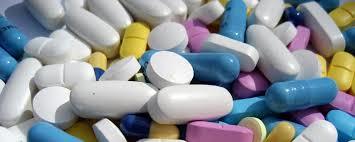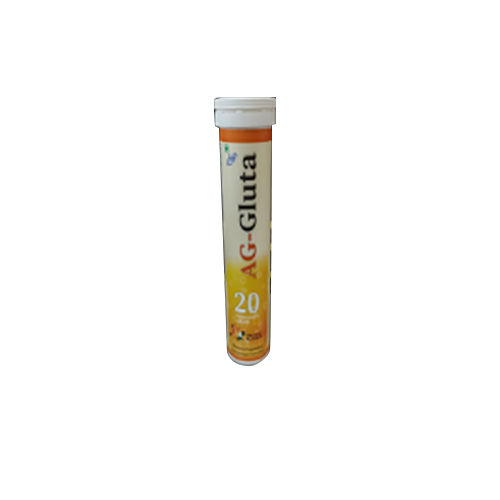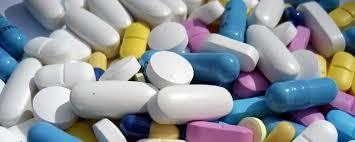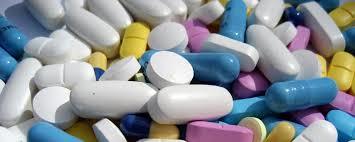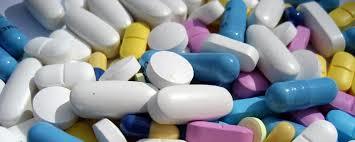
Nimesulide Mouth Dissolving Tablet
78 INR/Box
Product Details:
- Purity 98%
- Formulations Type General Drugs
- Formulations Form Tablets
- Gender/Age Group Adult
- Storage Instructions Dry Place
- Click to view more
X
Nimesulide Mouth Dissolving Tablet Price And Quantity
- 78 INR/Box
- 300 Box
Nimesulide Mouth Dissolving Tablet Product Specifications
- Tablets
- General Drugs
- 98%
- Adult
- Dry Place
Nimesulide Mouth Dissolving Tablet Trade Information
- Cash in Advance (CID) Cash Advance (CA)
- 300 Box Per Month
- 1 Months
- Yes
- Sample costs shipping and taxes has to be paid by the buyer
- Western Europe Asia Australia North America Eastern Europe Middle East Central America South America Africa
- All India
Product Description
Nimesulide is a selective COX-2 non-steroidalanti-inflammatory drug. This isa unique non-steroidal anti-inflammatory drug. It belongs to selective COX-2 inhibitors, with a potent anti-inflammatory and analgesic activity, when administered orally,rectally, or topically. Due to its analgesic and antipyretic properties, Nimesulide is widely usedfor the treatment of various inflammatory processes. It alsoshows less severe gastrointestinal side effects. It is one of the most commonly prescribed NSAIDs for thetreatment of various inflammatory conditions such as tonsillitis, pharyngitis, stomatitis,rheumatoid arthritis, osteoarthritis, low back pain, etc.Advantages Of Nimesulide Mouth Dissolving Tablets:
The concept of mouth dissolving tablets emerged from the desire to provide patients with a more convenient means of taking their medication. A mouth dissolving dosage form is designed to release drug rapidly within the oral cavity where it dissolves to form a drug suspension which is then swallowed.
The benefits of this approach are as follows:
â— The faster the drug can get into suspension, the quicker the absorption and ultimate onset of clinical effect. Hence a mouth dissolving dosage form may be particularly suitable for those conditions such as fever, pain, Inflammation, etc where a fast onset of clinical effect is required.
â— The mouth dissolving system rapidly disintegrates in the oral cavity, hence patients do not have to swallow large cumbersome dosage forms which discourages many from taking their medication. In essence, therefore, the mouth dissolving dosage form combines the benefits of liquid formulations with those of a solid oral dosage form.
â— Mouth dissolving formulation of Nimesulide can be described as a highly porous, microfine, matrix tablet. Once placed on the tongue, this matrix rapidly absorbs liquid and disintegrates. The drug, in a stabilized, size-reduced form to ensure an optimal drug suspension, dissolves rapidly in less than 60 seconds.
Nimesulide appears to exert its therapeutics effects through a variety of mechanisms viz4:
â— Selective Cyclooxygenase-2 inhibitor
â— Reduced generation of superoxide anions by stimulated polymorphonuclear leucocytes
â— Inhibition of platelet aggregation factor synthesis by activated cells
â— Scavenger of inactivation of alpha1-protease inhibitor
â— Inhibition of histamine release
Indications and Usage:
Nimesulide is indicated in reducing pain, fever and inflammatory symptoms of:
â— Chronic arthritis (Osteoarthritis)
â— Respiratory tract infections
â— Otorhinolaryngological diseases
â— Soft tissues and oral cavity inflammation
â— Dysmenorrhoea
â— Phlebitis / thrombosis
â— Urogenital disease
â— Postoperative pain states
â— Sports injuries
Pharmacokinetics:
Nimesulide is fairly rapidly absorbed from the gastrointestinal tract. The volume of distribution in the post distribution phase for Nimesulide ranges from 0.19 to 0.39 L/kg, indicating that the drug is principally distributed in the extra cellular fluid compartment. Nimesulide is almost exclusively metabolized and cleared by the liver. After oral administration of Nimesulide 100 mg, the apparent mean elimination half-life (t½β) varied from 1.96 to 4.75 hours. Nimesulide is mainly eliminated by the renal route.
Adverse Effects:
â— Gastrointestinal- Abdominal discomfort, heartburn, abdominal cramps, nausea, vomiting and diarrhea.
â— Central Nervous System- Headache, dizziness and drowsiness.
â— Genitourinary- Blood in urine, decrease in urination and kidney failure.
Contraindications:
â— Moderate to severe hepatic impairment.
â— Severe renal failure.
â— History of allergy to NSAIDs.
â— Peptic ulcer disease.
Drug Interactions:
Additive hepatotoxic effects with known hepatotoxins: anti-convulsants (e.g. valproic acid), anti-fungals (e.g. ketoconazole), anti-tuberculous drugs (e.g. isoniazid), tacrine, pemoline, amiodarone, methotrexate, methyldopa, amoxicillin/clavulanic acid. May decrease the oral bioavailability of furosemide and the natriuretic and diuretic response to furosemide. Increased risks of GI and hepatic adverse effects with other NSAIDs, including aspirin. May increase anti- coagulant effect of warfarin. Potentiates the action of phenytoin. May be displaced from binding sites with fenofibrate, salicylic acid, and tolbutamide. Interactions between NSAIDs and lithium, probenecid and ciclosporin, have been documented.
Food Interactions:
Alcohol increases the risk of hepatic reactions.
Warning and Precautions:
Caution should be exercised in patients with history of stomach problem, high blood pressure, fluid retention, elderly, during pregnancy and breast-feeding.
Other Precautions:
Avoid excess dosage.
Over Dosage:
No data is available on overdosage toxicity. In the event of overdose, it is reasonable to employ the usual supportive measures, e.g., remove unabsorbed material from the gastrointestinal tract, employ clinical monitoring, and institute supportive therapy, if required.
Tell us about your requirement

Price:
Quantity
Select Unit
- 50
- 100
- 200
- 250
- 500
- 1000+
Additional detail
Mobile number
Email


